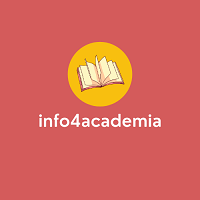Application of TIROCA Model at PT SPINDO
Abstract
Keywords
Full Text:
PDFReferences
Ahanger, R. G. (2011). The relationship between intellectual capital and financial performance: An empirical investigation in an Iranian company. African Journal of Business Management, 5(1), 88-95. Bakar, L. J. A., & Ahmad, H. (2010). Assessing the relationship between firm resources and product innovation performance: A resource based view. Business Process Management Journal, 16(3), 420-435. Barney, J. B. (1991). “Firm Resources and Sustained Competitive Advantage.†Journal of Management 17: 99–120 Barney, Jay. B and William S. Hesterly. 2010. Strategic Management and Competitive Advantage. 3rd Edition. Person Prentice Hall. Baxter, R., &Matear, S. (2004). Measuring intangible value in business-to-business buyerseller relationships: An intellectual capital perspective. Industrial Marketing Management, 33(6), 491-500.
Chatterjee, S., &Wernerfelt, B. (1991). The link between resources and type of diversification: Theory and evidence. Strategic Management Journal, 12, 33-48 Clarke, C. J. (1988). Using finance for competitive advantage.Long Range Planning, 20(2), 63-69. Conner, T. (2002).The resource-based view of strategy and its value to practicing managers.Strategic Change, 11, 307-316. Gill L., Delahaye B.L. (2004): Building organisational capability: your future, your business. In: Proceedings of 18th Annual Conference of the Australian and New Zealand Academy of Management, Dunedin, New Zealand. Grant, R.M. 1991. The resource-based theory of competitive advantage: implications for strategic formulation. California Management Review, Primavera, págs.114-135. Kostopoulos, K. C., Spanos Y. E., &Prastacos, G. P. (2002). The resource – based view of the firm and innovation: Identification of critical linkages.The 2nd European Academy of Management Conference, Stockholm. OSO Securities, 2016 Rufaidah Popy, 2014. Manajemen Strategik. 3rd Edition. Humaniora. Stewart, T. A. (1997). Intellectual capital - The new wealth of organizations (1st ed.). London: Nicolas Brealey Publishing. Ticha, Ivana (2010). Organizational capabilities as a source of competitive advantage: a conceptual framework. Department of Management, Faculty of Economics and Management, Czech University of Life Sciences, Prague, Czech Republic Wernerfelt, B. 1984.A resource-based view of the firm. Strategic Management Journal, Vol.5, págs 17 www.pu.go.id
DOI: https://doi.org/10.32535/ijabim.v4i1.383
Refbacks
- There are currently no refbacks.
Copyright (c) 2019 Khoirun Nisa Bahri, Nadia Meirani, Popy Rufaidah

This work is licensed under a Creative Commons Attribution-NonCommercial-ShareAlike 4.0 International License.
International Journal of Applied Business and International Management (IJABIM)
ISSN 2614-7432 (Print) | ISSN 2621-2862 (Online)
DOI Prefix: 10.32535 by CrossRef
Published by AIBPM Publisher
JL. Kahuripan No. 9, Hotel Sahid Montana, Malang, Indonesia
Email: journal.ijabim@gmail.com
Phone: +62 341 366222
Website: https://aibpmpublisher.com/
Governed by
Association of International Business and Professional Management
Email: admin@aibpm.org
Website: https://www.aibpm.org/
Licensing Information

The International Journal of Applied Business and International Management (IJABIM) is licensed under a Creative Commons Attribution-NonCommercial-ShareAlike 4.0 International License .












